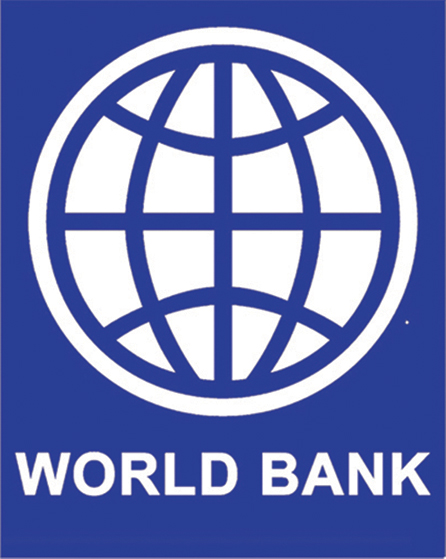
Africa’s Economic Growth Continues to Falter, Yet Some Countries Show Signs of Resilience
WASHINGTON, September 29, 2016— After slowing to 3 percent in 2015, economic growth in Sub-Saharan Africa is expected to fall further to 1.6 percent in 2016, the lowest level in over two decades. The sharp decline in aggregate growth reflects challenging economic conditions in the region’s largest economies and commodity exporters. Many of these countries continue to face headwinds from low commodity prices, tight financial conditions, and domestic policy uncertainties. Economic activity has been notably weak across oil exporters. At the same time, economic growth in about a quarter of the region’s countries is showing signs of resilience.
These latest figures are outlined in the new Africa’s Pulse, the World Bank’s twice-yearly analysis of economic trends and data for the region. Growth is far from homogeneous, suggesting that countries are growing at divergent speeds. While many countries are registering a sharp slippage in economic growth, some others—Ethiopia, Rwanda, and Tanzania—have continued to post annual average growth rates of over 6 percent. Several countries—including Côte d’Ivoire and Senegal—have become top performers.
“Our analysis shows that the more resilient growth performers tend to have stronger macroeconomic policy frameworks, better business regulatory environment, more diverse structure of exports, and more effective institutions,” says Albert Zeufack, World Bank Chief Economist for Africa.
Despite a recent pickup, commodity prices are expected to remain largely below their 2011–14 peaks, reflecting the weak global recovery. Faced with growing financing needs, commodity exporters have begun to adjust, but efforts have been uneven and remain insufficient. Against this backdrop, a modest recovery is expected with real GDP in Sub-Saharan Africa forecasted to grow 2.9 percent in 2017, then rising moderately to 3.6 percent in 2018.
Africa’s Pulse notes that the region’s economic performance in 2017 will continue to be marked by variation across countries. While the larger economies and other commodity exporters are expected to see a modest increase in GDP growth as commodity prices continue to stabilize, economic activity is expected to keep expanding at a robust pace elsewhere in the region, supported in part by infrastructure investments.
With the external environment expected to remain difficult, deeper adjustment would be needed in some countries to contain fiscal and current account deficits and rebuild policy buffers. The Pulse further argues that along with adjustments to macroeconomic policies, countries will need to accelerate structural reforms to bolster medium-term growth prospects.
Enhanced Agricultural Productivity for Poverty Reduction
The decline in oil and commodity prices has hurt resource-rich countries and signals an urgent need for economic diversification in the region, including through improvements in agriculture. Agricultural productivity growth in Africa has lagged that in other regions. While production increases elsewhere were driven by better use of inputs and improvements in production technologies, in Africa they resulted mainly from expanding the area under cultivation.
Public agricultural spending in Africa has also lagged other developing regions yet agriculture accounts for a third of region-wide GDP and employs two-thirds of the labor force, with the poorest countries most heavily reliant on it. Investments and smart policy choices are needed to foster growth in the rural economy, accelerate poverty reduction, and foster inclusive growth. Improving agricultural productivity is key to fostering structural transformation and managing the urban transition, by increasing incomes and enabling more people to move out of agriculture.
“Improving the productivity of smallholder farms is central to lifting rural incomes and reducing poverty in Sub-Saharan Africa,” says Punam Chuhan-Pole, Lead Economist for World Bank Africa and the report’s author. “But unleashing this productivity requires investing in rural public goods such as rural infrastructure, agricultural research, and use of improved technologies, as well as in availability of good data and evidence.”
As African regional markets develop rapidly—to reach an expected trillion dollars by 2030—the potential is enormous for increasing agricultural production and productivity. The Pulse finds that Sub-Saharan African countries underfund high-return investments, and that increasing the efficiency of current public spending in agriculture while rebalancing its composition could reap massive benefits.
Moving Forward
In order to move forward, Africa’s Pulse recommends that countries take urgent steps to adjust to low commodity prices, address economic vulnerabilities, and develop new sources of sustainable, inclusive growth. By boosting agricultural productivity, countries will not only raise the incomes of farm households, but will also lower food costs and promote development of agro-industry.
Contacts:
In Washington: Aby Toure, (202) 473-8302, akonate@worldbank.org
For more information about the World Bank’s work in Africa visit: www.worldbank.org/africa
For more information about Africa’s Pulse visit: http://www.worldbank.org/africaspulse
Friend us on Facebook: http://www.facebook.com/worldbankafrica
Follow us on Twitter: https://twitter.com/WorldBankAfrica
Watch our videos on YouTube: http://www.worldbank.org/africa/youtube
Listen to our Podcasts on Soundcloud: https://soundcloud.com/worldbank/sets/world-bank-africa
News Release
2017/009/AFR




